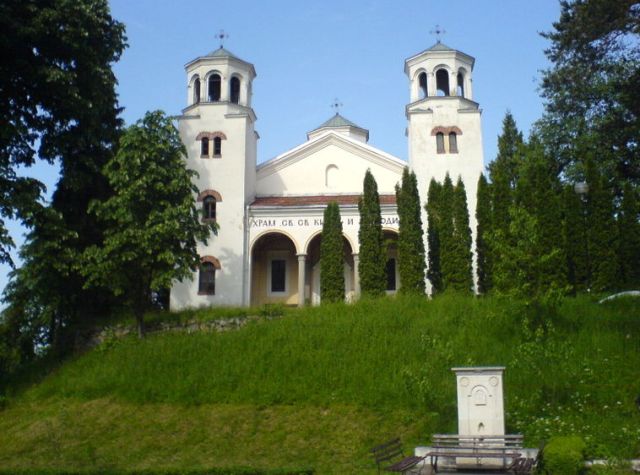A trip to Klisura Monastery
 Klisura Monastery is in the western part of the Balkan Mountain Range, close to the holiday town of Vurshets.
Klisura Monastery is in the western part of the Balkan Mountain Range, close to the holiday town of Vurshets.
Klisura Monastery dates back to the time of the Second Bulgarian State. It was built in 1240, but during Ottoman rule, it was repeatedly raided and destroyed. In 1862, on the holiday of Saints Cyril and Methodius, the cloister was burnt to ashes while all monks and pilgrims were slaughtered by a Turkish pasha, Yusuf Bey Pasha, from the town of Berkovitsa, and his soldiers. The monastery was reconstructed in a design similar to its present-day Renaissance one in 1869 by its first donor, archimandrite Antim Damyanov while the church, Sv. Sv. Kiril and Metodii, was officially consecrated in 1891 by Vidin’s metropolitan bishop.
This, at least, is a brief potted history. But I doubt that this description does justice to its unique ambience and the striking nature surrounding the monastery. I doubt that it truly sums the breath-taking Todorini Kouli Peak, that rises above the site, or of the taste of the spring water pouring out from a stone fountain in front of the church.
I’ve been there several times and every time I’m overwhelmed by a tranquil and mystical feeling.
First, to start with the road that leads to the monastery – “a place” as interesting as the monastery itself. There are the inescapable mehani offering kebabcheta and alcohol (!?), but, despite my revulsion about capitalist landmarks springing up on such a sacred site, I have to admit the restaurants offer amazing home-made sheep’s milk yoghurt and cheese.
Then the stalls came. The first time we visited Klisura Monastery we bought several sheets with tattoos, the ones that you water and then stick on your skin, and tattooed ourselves all over with roses, butterflies and so on. Yes, those are the kind of things people sell in front of the Bulgarian monasteries, apart from the small icons, food products and souvenirs.
But at the very beginning of the road leading to the monastery’s gates, on your left side, there is a small “spiritual island” unblemished by the surroundings. This is the holly spring and the chapel built around it (ayazmo in Bulgarian). The ayazmo shelters a spring that is believed to have healing and purifying qualities. We used to remove our shoes and dip our legs in the chilly holy water, thus leaving me with a confused simultaneous feeling of being a mischievous child and of being baptised again.
The monastery itself comprises two churches, a large one and a significantly smaller church, named St Nikola. The whole complex, which is very well maintained, includes three spacious residential buildings, a large farmyard and a kitchen surrounding the well-kept inner yard. I was really impressed by a giant cedar pine, in front of the main church, this being the first only I saw in my life.
As I have never been in Klisura at Easter I contacted Priest Antim from the monastery and asked him about rituals and celebrations marking the holy day. He said that Easter was not one of the largest, but the largest Eastern Orthodox religious holiday, the day when we praise our Saviour and his resurrection. That is why preparations for the holiday begin very early, Priest Antim explained to me.
On Good Friday, the crucifixion of Christ, the church provides the “plashtenitsa” (shroud) representing the tomb of Christ for worshippers to pray. Church-goers then pass under the plashtenitsa, which is held up by the priests.
On Holy Saturday there is solemn liturgy and at midnight comes the holiday’s culmination – Christians salute each other with “Hristos voskrese. Vo istina voskrese”. The church ceremony includes a ritual procession with the plashchenytsia followed by a joyful mass celebrating Christ’s resurrection. All the people gathered for the ritual should light candles from the priest’s candle, keep them burning the entire night and even take them home. “This will bring the Holy Fire not only to their homes, but to their souls,” Priest Antim told me.
Then worshippers circle church three times. This ritual is called “letya” in Bulgarian. “The circle symbolises eternity,” Priest Antim said. “And ‘letyata’ praises our eternal God and our faith in eternal life.”
The church ceremonies are accompanied by all the beautiful and joyful traditional Bulgarian rituals for the holiday – exchanging coloured eggs and kouzunatsi.
View our offers in/close to Montana
read more articles
